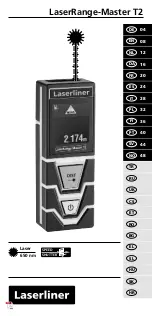
Aquaprobe
®
AP-700, AP-800 & AP-2000 Instruction Manual
10401-00870 Rev R
16.10. 2000/5000-REFOIL Refined Oil Electrode
Refined fuels such as benzene, toluene, ethylbenzene, and xylenes (BTEX)
can be measured by
the Aquaprobe
®
using the optional 2000/5000-REFOIL optical electrode.
16.10.1.
Principle of Operation
The 2000/5000-REFOIL optical electrode is a submersible, fixed response fluorometer,
which provides excitation at 285nm (deep UV) and detects any resultant fluorescence
between 330nm and 370nm.
The electrode induces the aromatic hydrocarbons within the refined oil to fluoresce, then
measures the longer wavelength light which is emitted as a result of the fluorescence
process.
➔
During operation, the Refined Oil Electrode emits high intensity ultraviolet
(UV) light, which is harmful to skin and eyes and may cause cancer. Avoid
exposure to UV light when the Electrode is in operational.
➔
Precautions must be taken to avoid looking directly at the Electrode without
the use of UV light protective glasses.
➔
Do not look directly at the lenses on the front face of the Electrode when it is
operational.
➔
Ensure the warning label supplied with the Electrode is attached to the
Aquaprobe
®
.
16.10.2.
Limitations of Use
Determination of refined oil in the field using fluorescence measurement techniques will
never be as accurate as measurements made in a lab using either Gas or Liquid
Chromatography.
Factors adversely affecting accuracy include:
•
Interference from other compounds (such as flour and some bacterial spores which
fluoresce at similar wavelengths.
•
Differences in the fluorescent response between various types of oil.
•
Differences in the fluorescent response caused by temperature.
•
Differences in the fluorescent response caused by ambient light.
•
Interference caused by turbidity.
© 2017 Aquaread
®
Ltd.
www.aquaread.com
Page 82 of 141
















































